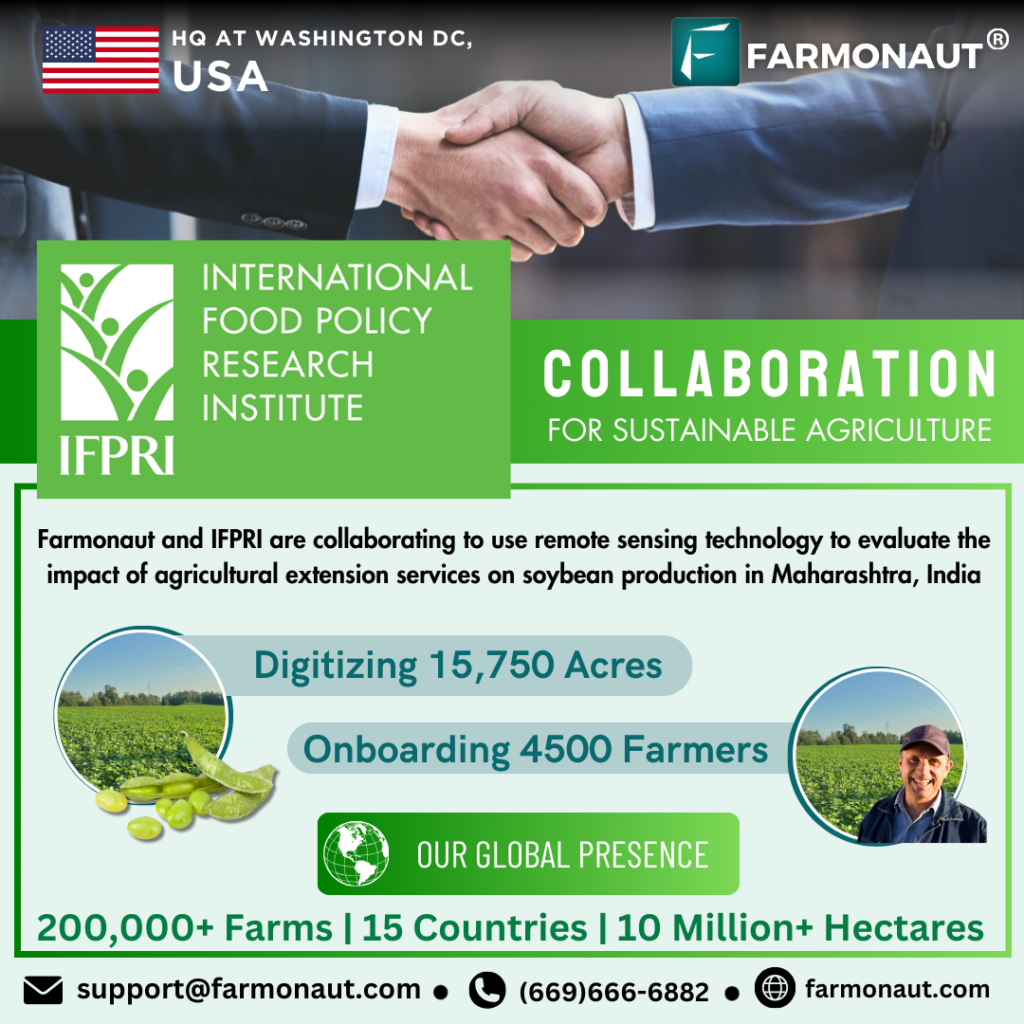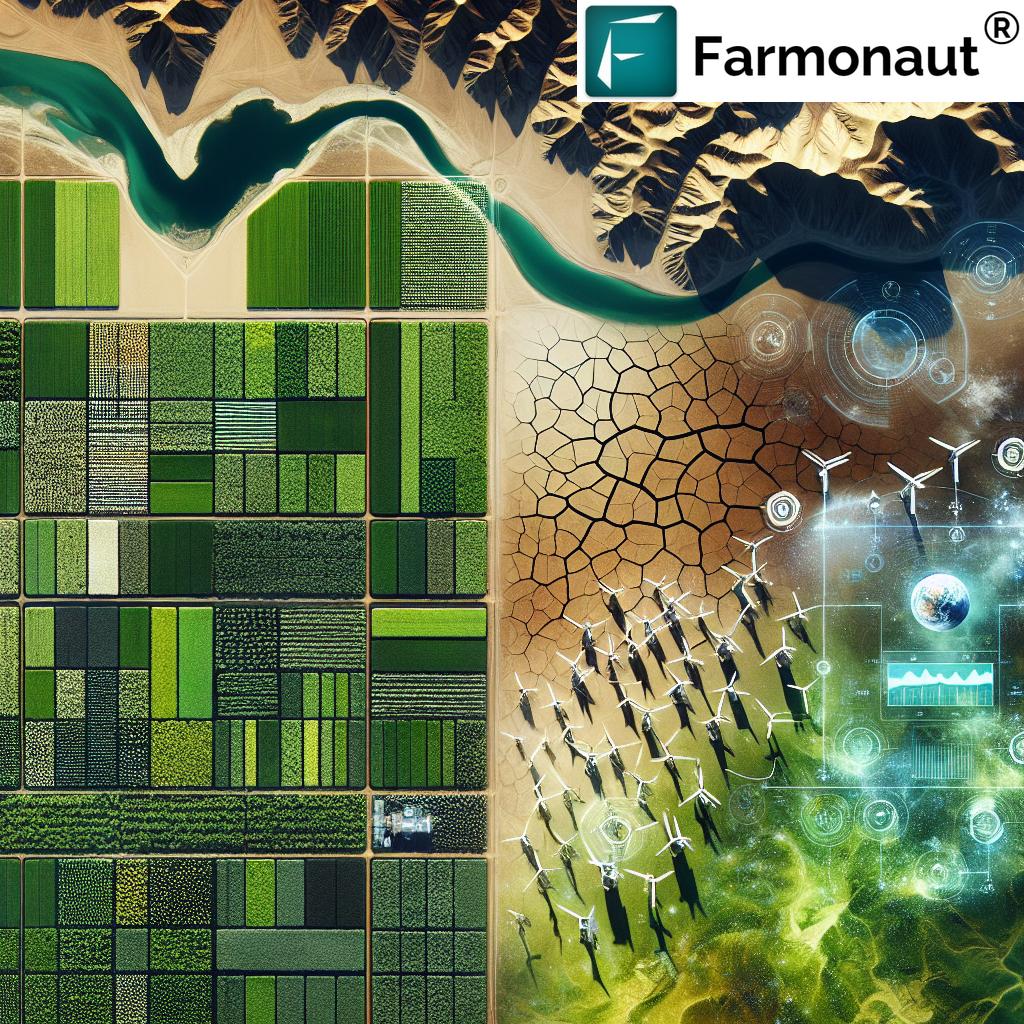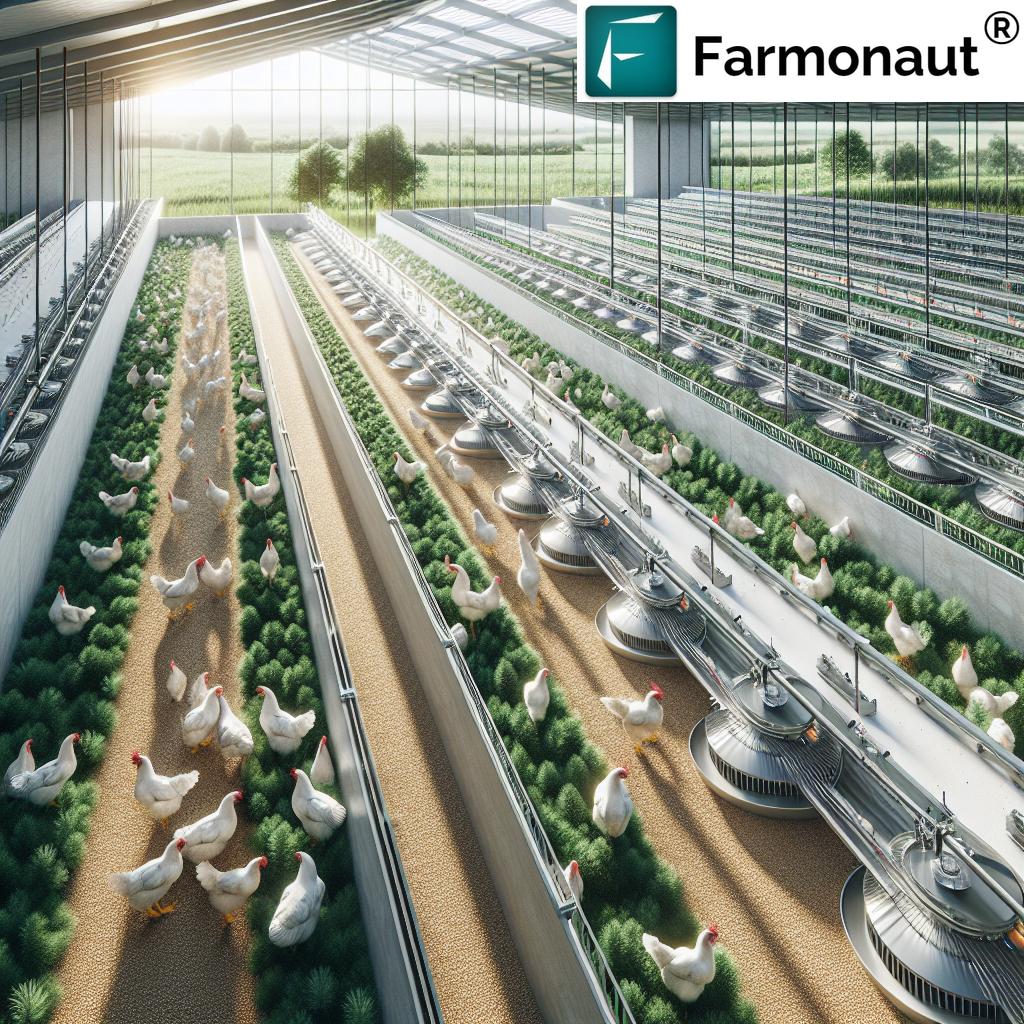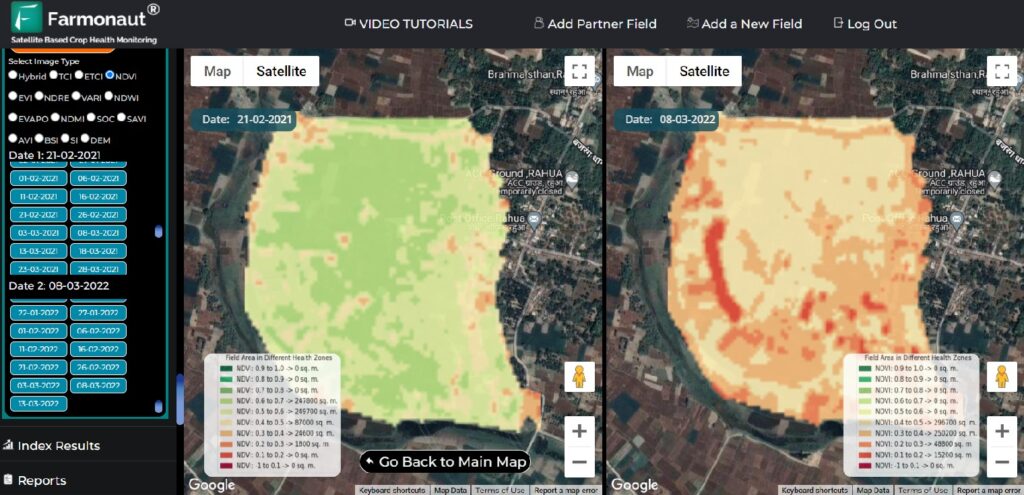Table of Contents
- Canola Overview: Booming in 2024
- Trivia: Global Canola Production Insights
- Optimal Canola Cultivation Practices
- Canola Disease and Pest Management Strategies
- Canola Yield Optimization: Key Factors
- Diverse Canola Oil Applications & Health Benefits
- Canola Meal for Animal Feed
- 2024 Canola Market Dynamics & Global Trade
- 2024 Global Canola Market Overview (Table)
- Farmonaut: Advanced Precision Farming for Canola
- FAQ: Canola Booms in 2024
- Conclusion: The Future of Canola
Canola Booms in 2024: Surprising Trends & Top Uses
“Global canola production is projected to exceed 75 million metric tons in 2024, marking a 10% increase from 2023.”
As we step into 2024, canola – a member of the Brassicaceae family – is firmly in the global spotlight. Driven by increased canola oil applications, enhanced cultivation practices, and evolving market dynamics, this versatile oilseed crop continues to transform modern agriculture, farming, and forestry.
In this comprehensive guide, we’ll explore the latest developments pushing canola to new heights, from canadian canola production surges to canola trade with China uncertainties and breakthrough yield optimization strategies. We’ll unveil diverse canola oil health benefits, reveal top applications (from kitchens to industry), dive deep into disease management and crop rotation strategies, and examine how advanced technologies like precision agriculture (Farmonaut) are shaping canola’s future sustainability worldwide.
Optimal Canola Cultivation Practices: From Soil Selection to Crop Rotation
Successful canola cultivation starts with understanding the optimal conditions required for maximum yield. As a globally cultivated oilseed crop, canola thrives when we balance the right soil, rotation, nutrient management, and weed control.
Soil Selection: Silt Loam Soils for Superior Growth
- Silt loam soils that are well-drained provide the best environment for canola seeds to germinate and develop robustly.
- Proper drainage prevents waterlogging, reduces risk of root diseases, and promotes strong root systems.
- Intensive soil testing helps us tailor fertilization strategies to local nutrient levels–crucial for healthy canola oil crop development.
Crop Rotation: Managing Weeds & Soil Health
- Incorporating canola into a crop rotation with grains, corn, or sorghum provides opportunities to manage grass weeds and break disease cycles.
- Canola crop rotation strategies reduce buildup of pests and soil-borne diseases (like sclerotinia stem rot), supporting long-term soil health.
- As canola and brassica plants decay, they release natural chemical compounds that act as biofumigants – toxic to certain fungal pathogens, creating a healthier environment for new plants.
Key Tip: In areas prone to sclerotinia stem rot or other serious diseases, we should only grow canola once every four years and avoid close rotation with legumes or sunflowers.
Weed Management: Early Control is Crucial
- Weed control during early stages (seedbed preparation, tillage, use of pre-plant herbicides) is vital to reduce yield competition.
- Pay attention to herbicide carryover. Always follow plant-back restrictions, as canola is sensitive to residues.
- Planting herbicide-tolerant canola varieties gives us flexibility in weed management and helps fit canola into diverse farming systems.
For advanced weed management insights and real-time crop health monitoring, explore Farmonaut’s Large-Scale Farm Management Solution. It enables precision canola weed control with satellite-based monitoring for better growth and higher yields.
Fertilization & Nutrient Management
- Canola growth requires significant nitrogen. Nearly half is absorbed before the bolting stage (rapid stem elongation).
- Best results come from split nitrogen applications: 25–33% applied in the fall, with the rest in early spring. This reduces nitrogen loss and enhances yield.
- Other nutrients: Maintain adequate phosphorus, potassium, boron, sulfur, and lime levels (confirmed via soil tests) for strong root systems and seed quality.
Farmonaut’s Carbon Footprinting service helps monitor fertilizer inputs, promoting sustainable nutrient management and reducing environmental impact.
Canola Disease Management & Pest Control Strategies
Healthy canola crops depend on proactive pest and disease management. Key threats include:
- Pests: Flea beetles, lygus bugs, worms—these insects can cause significant crop losses, especially during early growth stages.
- Diseases: Blackleg, downy mildew, alternaria black spot, and sclerotinia stem rot. These affect plant vigor, seed development, and final canola yield.
Integrated Pest Management (IPM) for Canola
- Regular field scouting and timely interventions (biological and chemical) are essential to reduce pest outbreaks.
- Choosing disease-resistant canola varieties helps us prevent or slow the spread of major diseases, reducing the need for routine sprays.
- Apply fungicides judiciously when disease thresholds are met—avoid unnecessary treatments to preserve beneficial organisms and manage costs.
Use of advanced remote-sensing tools like Farmonaut’s satellite-based crop health monitoring makes it easier than ever to detect canola pest or disease stress before yield losses occur. Try our real-time monitoring dashboard to stay ahead!
- Monitor NDVI and other spectral indices for early signs of stress in canola fields
- Get AI-based disease and pest alerts, making management more efficient.
For digital crop area estimation and risk analytics, Farmonaut Crop Loan & Insurance is a valuable tool for lenders, insurers, and government agencies managing risk associated with canola diseases and pests.
Biofumigation: Harnessing Brassica Power
- As we rotate canola and other Brassicas in cropping systems, their residues decay and naturally release chemicals that have biofumigant effects—suppressing specific fungal diseases and preparing fields for future plantings.
This sustainable practice not only reduces fungicide reliance but also fosters an improved soil environment for subsequent crops.
Canola Yield Optimization: Boosting Production in 2024
The global boom in canola production hinges on yield optimization. High market demand for healthy canola oil products has driven innovation in monitoring, genetics, and resource strategies.
- Adopt precision nitrogen management: Precise timing and amounts reduce waste and maximize growth.
- Use advanced crop varieties: Select hybrids bred for high oil content, disease resistance, and strong performance in Saskatchewan, Alberta, Manitoba, and other top producing areas.
- Implement remote crop monitoring: Farmonaut’s platform delivers satellite-based canopy vigor analysis, soil moisture tracking, and pest alerts—all key to optimizing canola yield.
- Early weed control: Give canola a competitive advantage in the field’s earliest stages.
For custom integrations and large-scale canola farm analytics, use our
Farmonaut Satellite & Weather Data API
(Developer Docs).
“Over 80% of canola oil produced worldwide is used in food applications, making it a kitchen staple across continents.”
Canola Oil Applications: Health Benefits & Industry Uses
Canola Oil Health Benefits: Culinary & Nutrition
- Low in saturated fat: Canola oil contains less saturated fat than most common cooking oils, reducing risk factors associated with heart disease.
- High omega-3 fatty acids: Excellent source of plant-based omega-3s, which promote heart, brain, and skin health.
- Neutral flavor & high smoke point: Makes it ideal for frying, baking, or salad dressings—versatile in professional and home kitchens globally.
With over 80% of global canola oil heading to food applications, it is no wonder canola oil is a kitchen staple and a top choice for health-conscious consumers.
Beyond Food: Industrial Canola Oil Applications
- Biodiesel & Biofuel: A sustainable ingredient for cleaner energy, reducing greenhouse gas emissions compared to fossil fuels.
- Lubricants: Used in machinery and high-performance lubricants due to its oxidative stability.
- Cosmetics: Present in skin creams, soaps, and conditioners for its emollient properties.
As demand for sustainable plant-based products grows, canola’s role in these industries continues to expand. Looking to add eco-friendly value to your supply chain? Farmonaut’s Product Traceability platform ensures transparent, blockchain-powered tracking of every canola product, from field to factory.
Canola Meal for Animal Feed & Plant-Based Protein
The byproduct (meal) of canola oil extraction is a protein-rich, fiber-laden ingredient remarkable for its broad .
Animal Feed Applications
- Canola meal is highly digestible and cost-effective, making it a key component in livestock diets (cattle, poultry, pigs).
- High protein levels (35–40%) stimulate animal growth, support milk and egg production, and enhance feed efficiency.
Canola Protein in Plant-Based Foods
- As consumer demand for vegan and vegetarian options rises, food processors use canola protein in meat analogues and dairy alternatives.
- Canola’s unique amino acid profile adds functionality and nutrition to next-generation plant-based foods.
2024 Canola Market Dynamics: Global Production, Trade & Trends
Rapid growth in canola production and shifting trade flows are reshaping the global canola market. Canada, especially the Prairie Provinces of Saskatchewan, Alberta, and Manitoba, remains the world’s powerhouse, while China and Australia lead the charge in imports, buyers, and supply chain adjustments.
Canadian Canola Production: A Market Driver
- In 2023, Canada’s rapeseed/canola production reached 18.6 million metric tons, a significant increase from 14.2 million metric tons in 2022.
- Saskatchewan leads the country, accounting for 55% of total output, followed by Alberta (28%) and Manitoba (16%).
- These provinces deliver around 80% of all Canadian supply, thanks to optimal growing conditions and investment in best practices.
With evolving food, feed, and biofuel industries, canadian canola production is expected to remain robust even amidst market uncertainty.
Canola Trade with China & Australia: 2024 Developments
- China is the world’s biggest canola importer. In the first 10 months of 2024, canola imports reached 5.074 million metric tons.
- Late 2024 saw Chinese buyers slash Canadian canola imports, worried about potential anti-dumping duties (full news report).
- Australia stands to benefit: Provided it overcomes blackleg fungus concerns (and passes phytosanitary standards), australian canola exports to China could surge. (read full analysis)
Global Demand & Sustainability
- Global demand for canola oil and meal remains high, fueled by health-driven consumer choices, plant protein needs, and the biofuel revolution.
- Sustainability pressures—reducing pesticide use, boosting carbon sequestration, and improving transparency—push the industry toward smarter monitoring and traceability solutions.
- Farmonaut empowers this progress with satellite-based crop analytics, blockchain traceability, and carbon footprinting for the modern canola supply chain.
2024 Global Canola Market Overview
| Country/Region | Cultivation Area (million hectares) |
Average Yield (tons/hectare) |
Main Uses | Export Volume (million tons) |
Market Growth Rate (%) |
|---|---|---|---|---|---|
| Canada (Saskatchewan, Alberta, Manitoba) | 9.1 | 2.0 | Oil, Feed, Biofuel | 11.5 | 8% |
| Australia | 3.2 | 1.8 | Oil, Feed, Biofuel | 2.9 | 7% |
| European Union | 6.5 | 3.0 | Oil, Biofuel | 4.1 | 5% |
| China | 7.2 | 1.6 | Oil, Food | 0.6 | 6% |
| India | 7.1 | 1.3 | Oil, Food | 0.2 | 4% |
Farmonaut: Precision Agriculture Innovations for Canola Cultivators
Modern canola farming is rapidly adopting digital solutions for smarter decisions and sustainability. Farmonaut is at the forefront of this movement, making precision agriculture affordable and accessible to all.
What Does Farmonaut Offer Canola Growers?
- Satellite-Based Crop Health Monitoring: Detect canola stress (disease, drought, pest attacks) using NDVI, soil moisture, and temperature anomalies for timely interventions.
- Jeevn AI Advisory System: Personalized, real-time advisory for canola cultivation practices, weather forecasts, and crop-specific recommendations.
- Blockchain-Based Traceability: Track every step of the canola journey—proving authenticity and boosting consumer trust.
- Fleet & Resource Management: Optimize fleet, reduce logistics costs, and improve operational efficiency on large canola farms with Farmonaut’s Fleet Management Service.
- Carbon Footprinting: Quantify the environmental impact of your canola operations and implement strategies to maximize sustainability (learn more).
Whether you’re a farmer in Saskatchewan, a processor in China, an agribusiness in Australia, or a policy-maker focused on market dynamics, Farmonaut’s platform helps maximize canola yields and sustainability.
For tailored canola insights, download our app or access our web dashboard now:
API Access for Agritech Professionals & Research
Need to build your own custom canola analytics tools? Farmonaut’s API and Developer Docs enable seamless integration of satellite and weather data into your workflows.
Farmonaut’s Flexible Subscription Plans
Choose a plan that matches your farm’s size or business needs. Farmonaut’s scalable platform ensures all canola growers—smallholders to large agribusinesses—can benefit from data-driven precision farming.
Frequently Asked Questions: Canola Booms in 2024
Q1: What are the key health benefits of canola oil?
Canola oil is low in saturated fats and high in heart-friendly omega-3 fatty acids. Its neutral taste and high smoke point make it perfect for a wide range of culinary uses. Regular use of canola oil may help reduce cholesterol and promote cardiovascular health.
Q2: How do canola cultivation practices impact yield?
Optimal practices, including proper soil selection (preferably silt loam), timely nitrogen management, strategic crop rotation, and proactive weed and disease control, significantly enhance canola yield and long-term soil fertility.
Q3: What are the main canola oil applications beyond cooking?
Beyond cooking, canola oil is used in creating biodiesel for sustainable fuel, as a base for industrial lubricants, and in the manufacturing of cosmetics and personal care products.
Q4: How is technology improving canola farming?
Platforms like Farmonaut offer real-time satellite monitoring, AI-driven advisories, fleet/resource management, product traceability, and environmental impact tracking, making canola farming more productive, sustainable, and resilient to market shifts.
Q5: What’s driving the canola market dynamics in 2024?
Strong global demand for healthy oils, the shift towards plant-based protein, heightened sustainability requirements, and shifting trade relationships (notably between Canada, China, and Australia) are actively shaping the 2024 canola market.
Q6: Where can I get started with Farmonaut’s canola monitoring platform?
You can get started by downloading the Farmonaut application for web, Android, or iOS, or integrate its features via API access for enterprise/industrial needs.
Conclusion: Canola’s Growing Significance in Global Agriculture
The surge in canola demand and production in 2024 reflects its vital role across food, feed, industrial, and energy sectors. With healthy canola oil benefits, versatile applications, and strong market growth, this oilseed crop is fundamental to sustainable global agriculture and forestry.
Whether you’re a grower seeking yield optimization, an agribusiness managing supply chains, or a consumer focused on health, canola’s trajectory remains firmly upward. Staying competitive means embracing precision practices, traceability, and sustainability—areas where Farmonaut leads with satellite, AI, and blockchain-powered tools.
In a world hungry for healthy oils and resilient supply chains, investing in optimal canola cultivation, proactive disease/pest management, and responsive trade strategies will keep this remarkable Brassica at the heart of our fields—and on our tables—well into the future.






















manuscripts significantly